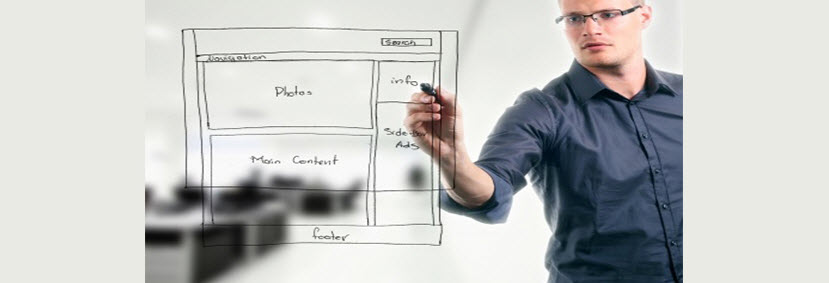Today, almost anything and everything is on the internet.
Websites are becoming more overcrowded each day making it almost impossible to get noticed. However, by following a few guidelines on how to design, you can learn how to design a wonderful website that will attract the traffic you want.
Designing a website is more of an art than science and if you are a little creative, this can be relatively easy.
If you are an showbiz person and want the world to view your work and relate to you, be sure to make your web pages interesting, simple and stylish. People want to learn about you quickly, not wade through a massive ego trip.
Although most people prefer to outsource these services, having an idea of what you are looking for will help the designer a great deal. So here are a few design principles you should get your head around.
Your web page will look balanced if you apply these three principles of design.
1. Balance
Your articles and images should not converge onto one side or the other. Have a good eye for symmetry and asymmetry. Balance is a very important principle in any design and there are three things to consider when balancing your web page.
Symmetry – ensure that the amount of graphics and text on each page is balanced without crowding certain pages or leaving others almost empty. Positioning of the articles should be pleasing to look at and in balance with the pages.
Asymmetry – this is achieved by ensuring that large elements are visible in relation to small elements. Balance a large image with a large amount of visually small elements.
Radial – think of radial as a dart board where everything is distributed in a circular style around the centre or the bull’s eye. The elements in your page should be distributed evenly around the periphery of the center. A website for an actor for example may place the current works at the centre and progress outwards to the older achievements.
2. Grid
The grid is actually a series of evenly distributed vertical and horizontal lines.This is a very powerful tool with a capacity to organize chaos into order. If you have an idea about graphics, you probably know how to use grids.
There are a whole lot of things you can achieve with grids.
The idea behind grids is to use columns to improve readability and balance, so as to please the eye. The design is not a stand alone principle; the structure of the elements will make the page readable and impressive.
Designers who use grids understand how to use frameworks and how wide to design them. It’s important to do some research on how to use these invisible frameworks. They balance and align elements on a page. You cannot rely on your eye to balance objects in a page, a small alignment mistake will make your entire page seem to be tilting on one side.
3. Color
Nothing puts people off more than a dull looking website.
A multi-colored page does not look good to the eye either.
You need to balance your colors. And choosing a great color scheme is not easy.
Color should be selected in relation to rhythm, vibrancy, contrast and complementation. Colors are vibrations (wavelengths) perceived by the eye. Research and know which colors compliment each other and which ones contradict each other. Think about how people will view the colors in a digital display as opposed to on a wall. Finally, do a bit of research into the psychology of color and how they arouse the emotions. Then…find the ones that match with both your own and your audiences’ preferences. It’s often a matter of taste.
I

